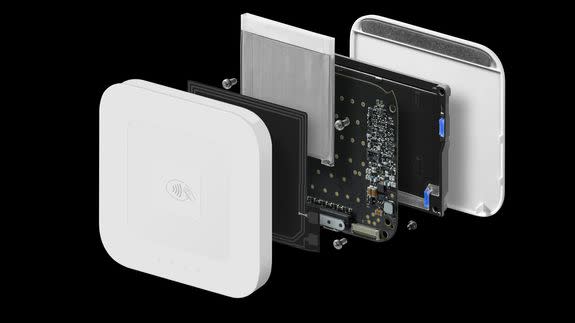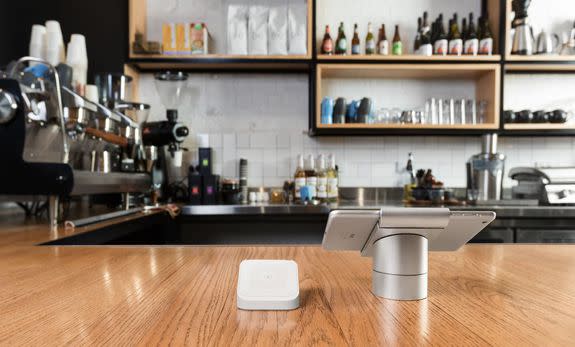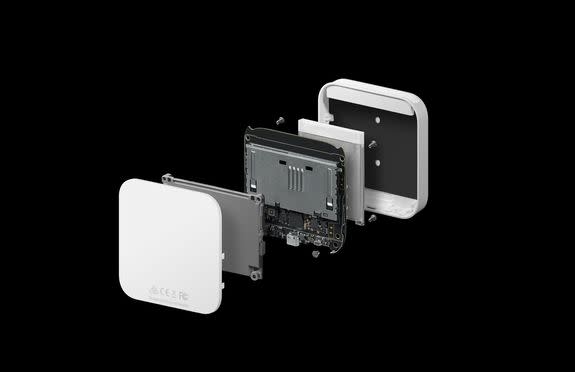Why an ex-Apple design chief got Square to abandon the audio jack

Think of the Square Reader as an argument for ruthless simplicity.
"It's iconic, it's simple, it does exactly what it's supposed to do and nothing more." Or so says Jesse Dorogusker, head of hardware at the U.S. payment technology company and veteran of more than eight years of Apple design.
SEE ALSO: Facebook's immersive media head on why 360 video may need its own app
Following on the heels of its Square Reader, the company brought its contactless and chip card reader to Australia in September, which can accept tap-and-go payments and mobile wallets. Shocking absolutely no one, both items are square. They're also white, screen-less, wireless (in the latter's case) and they have one job: Taking money.
According to Dorogusker, the company's low-fat approach to hardware design was born from a recognition that its target audience, small business owners, already had almost everything they needed.
"That's the founding story of Square," he said. "I have a supercomputer in my pocket. I'm a small business connected to a bank system and card networks that totally work. All of my buyers carry around [credit cards], but there's just one more thing I need. For us, it was this reader."

Image: Jaclyn Barcewski
Outsourcing the screen
It may be a hangover from his time as director of engineering for iPod, iPhone and iPad accessories, but Dorogusker has extreme respect for the smartphone. Why try to over innovate when Apple and Samsung have done everything for you?
"Probably the most profound tech change for consumers over the last 10 years is how good consumer devices are," he said. "It used to be that you had a good computer at work and a crappy computer at home. Samsung and Apple totally flipped that."
Still (and foolishly in his view), each new product on the market, from internet of things hubs to wearables, seems hellbent on using their own screen. That's something Square hasn't attempted.
"Samsung and Apple have invested an unreasonably large amount of money in making the most gorgeous touch screen displays in the world," he pointed out. "The crispness, the typography, the attention to colour ... Why would you want to look at anything else?"
"Our readers connect to the device you already have. That screen has won, I believe."
To return to the idea of simplicity, even new technology with the best screens can fail if they make the consumer take too many steps at once. "One of the things we've definitely learned, and continue to be mindful of … is that behaviour charge is hard, it's slow. It has to be purposeful," he said.
Take the messy range of wearable devices out there. Without naming names, Dorogusker said he felt the wearables that have succeeded so far are those that do very little.
"They count your steps, they don't also tell you which direction you're going, and make restaurant recommendations, and let you pay," he said. "They've really whittled it down to just a new behaviour of two.
"If the new behaviour is accepting credit cards, great, let's just do that. Let's do nothing else."
Dumping the audio jack
Both Square's readers fit in the palm of your hand, but in this case, size belies complexity.
While the original Square Reader connects via headphone jack to a smartphone or tablet, the design team chose to make the contactless reader wireless. To build a device that communicated via Bluetooth, however, it had to be bigger, precipitating an important choice.
"I was attracted to the consistent, plug-into-the-audio-jack thing, but once we went contactless, the story kind of falls apart," Dorogusker said.
Holding the 66 millimetre by 66 millimetre contactless reader next to a smartphone, he demonstrated how clunky and unappealing the pairing is. "This is your supercomputer, it's thin for a reason. Plugging the contactless reader in would have violated that," he explained.
Not to mention, Apple recently gave us fair warning: audio jacks are not forever.

Image: Terence Bordon
Compared to the clunky payment terminals offered by Australia's banks, Square can afford to be ruthless in cutting down the size of its products given it controls both its hardware and software.
"We can decide in the software that this device should go to sleep to preserve its power, so we can make the battery nice and small," Dorogusker pointed out. "You can only do that if you're responsible for the whole stack."
Dorogusker said it's really the integration of the device's components he's most proud of. Take the lights, which indicate activity and battery. They're in a black box so their brightness doesn't bleed. The surface plastic was also thinned to make their tone just the right shade.
"The whole idea is that you should see lights when you see them and you shouldn't see lights when you don't see them," he said. "They should be meaningful and jump out when they have something to say."
When you have only one job to do, apparently the adage works: A place for everything, everything in its place.
